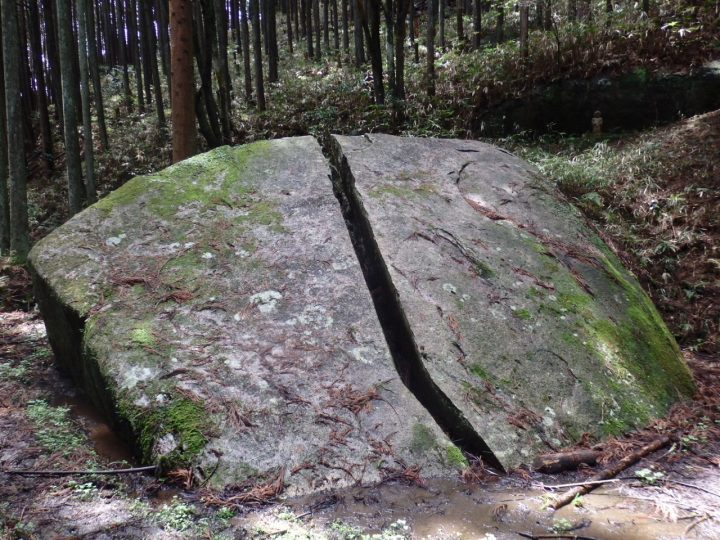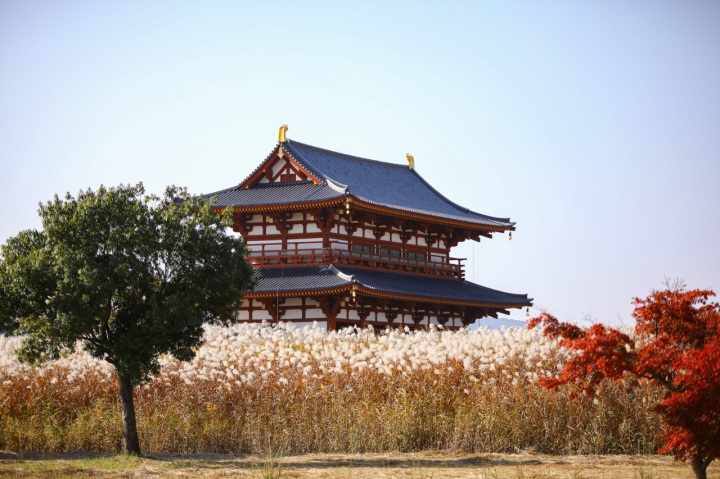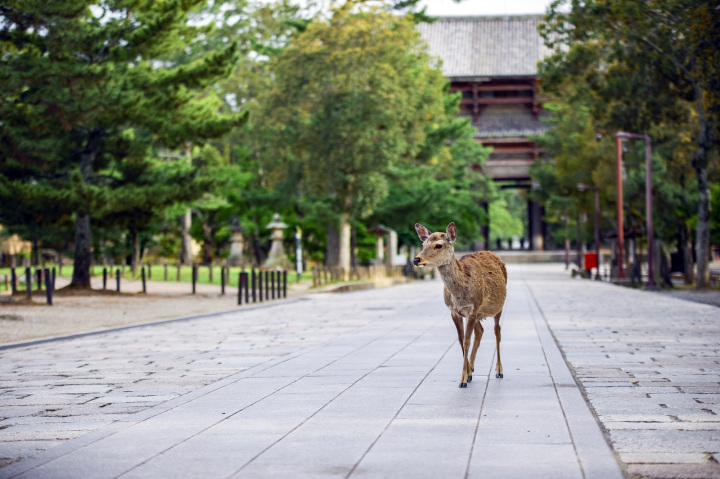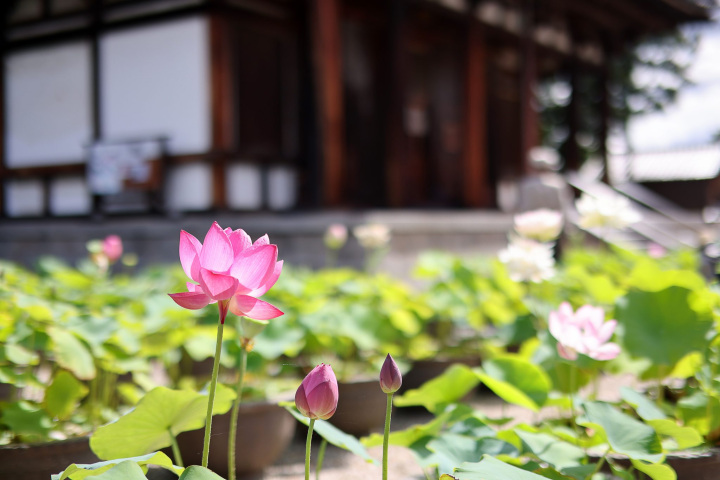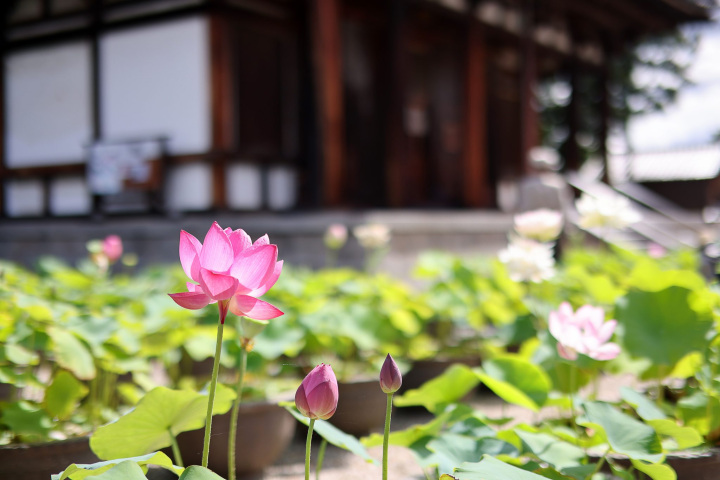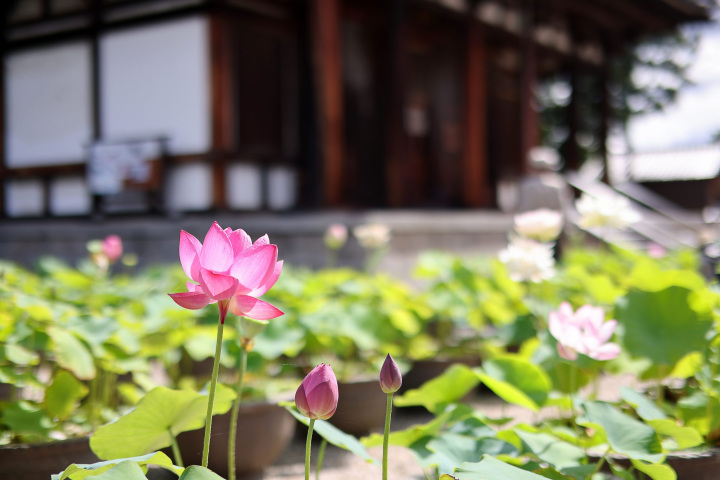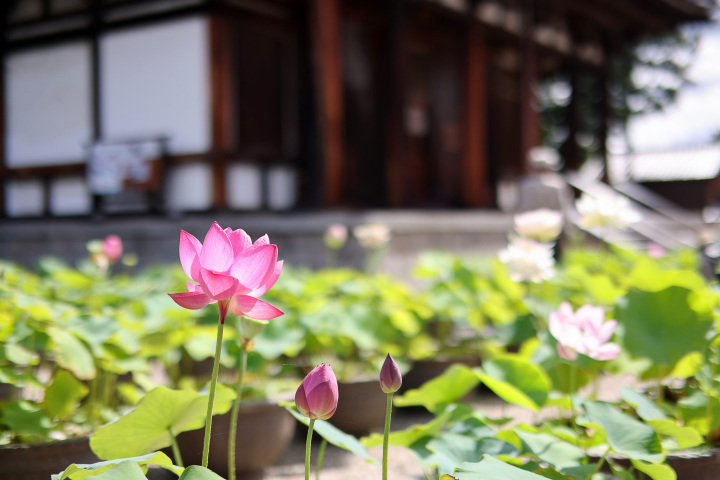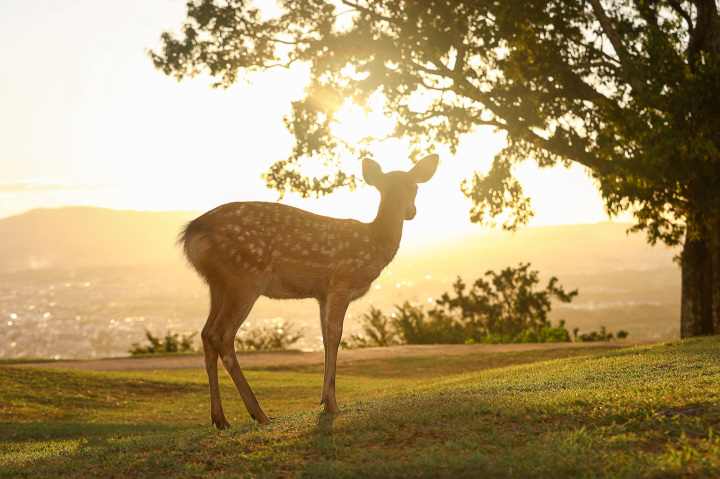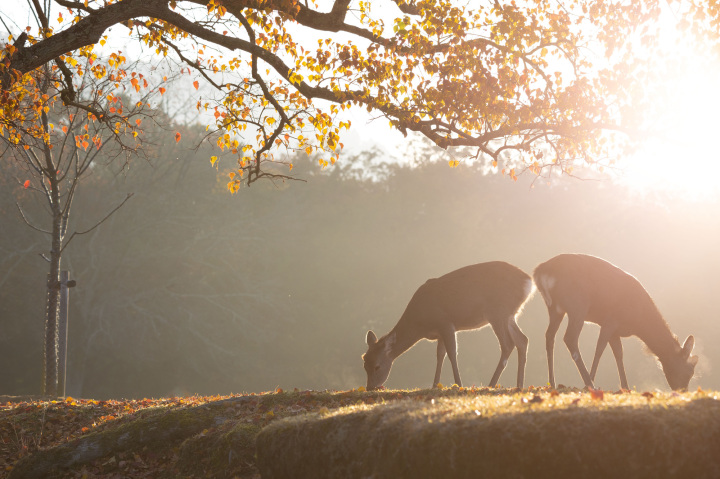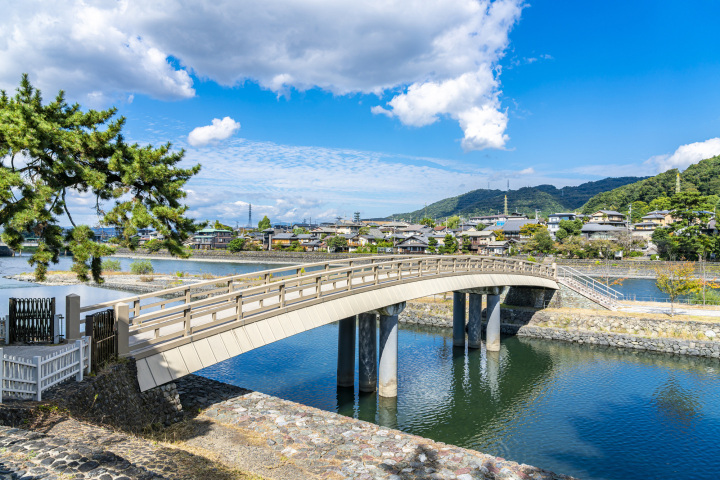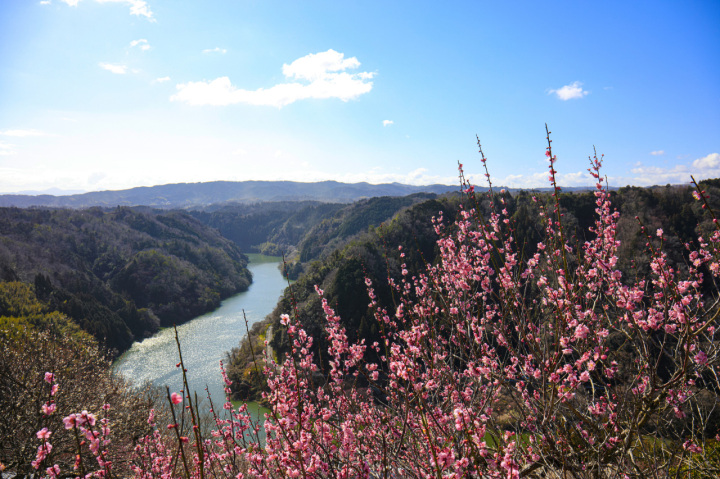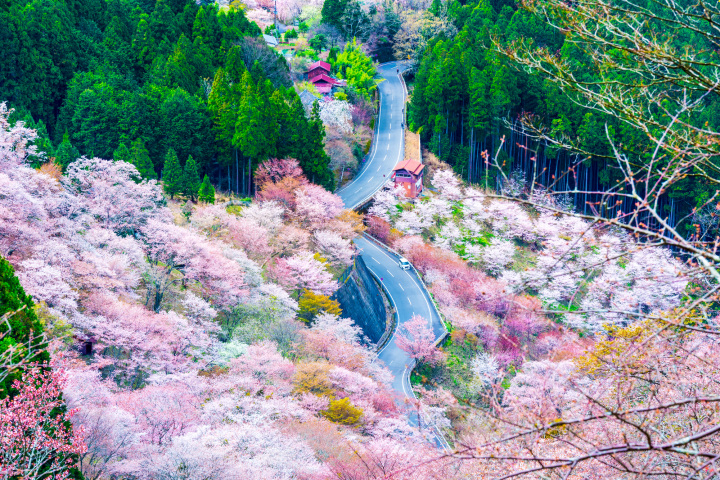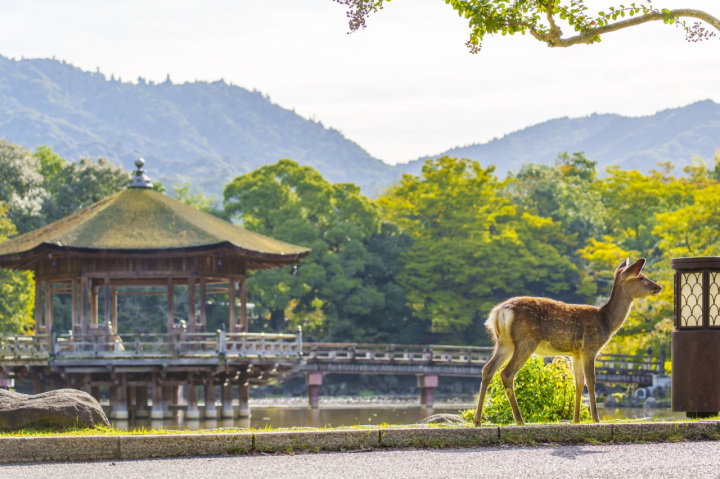Nara Camera Trip! Itinerary for 2 days and 1 night to visit photo-worthy spots in the ancient capital
Nara is also a great place for a camera trip, with photogenic spots such as Nara Kingyo Museum (Goldfish Museum) and areas with a sense of history such as Naramachi. This page introduces a recommended model course for a photogenic trip to Nara, which you can enjoy with a camera in hand!
- Days required
- 2 days and 1 night
- Main methods of transportation
- Train, bus, walking
Itinerary features

Nara Kingyo Museum(located in MiNara)
![[ Undefined: coursed-title-plain ]](/lsc/upfile/courseDetail/0000/0169/169_1_l.jpg)
One of the largest goldfish museums in Japan opened in 2021 in Nara, a major goldfish production region. The museum features 3,000 goldfish of about 40 species swimming gracefully in an aquarium that looks like a work of art, and a light and sound production fused with projection mapping, allowing visitors to enjoy the museum with all five senses. Of course, all areas of the museum are open for photography, and all of the exhibits are very photogenic. It is the perfect place to start your camera trip!
[Lunch] Inside MiNara
![[ Undefined: coursed-title-plain ]](/lsc/upfile/courseDetail/0000/0170/170_1_l.jpg)
MiNara is a shopping complex with a shopping mall, and has a food court on the first floor where you can easily enjoy a variety of different types of food. There are also other cafes and restaurants where you can have lunch, so check out MiNala's gourmet guide.
Hokkeji
Empress Komyo designated Hokkeji as the head of a national system of convents.
![[ Undefined: coursed-title-plain ]](/lsc/upfile/courseDetail/0000/0172/172_1_l.jpg)
Empress Komyo, a key figure in the spread of Buddhism in Japan, established the Hokkeji Imperial Convent in 745 and designated Hokkeji as the head of a national system of convents. Hokkeji can be roughly translated as the Temple of the Flower of the Law. Empress Komyo encouraged women in the convent to practice flower arrangement, and the Hokkeji Goryu school of ikebana continues today.
The Empress was a deeply devout woman who devoted herself to caring for the less fortunate. She established an infirmary and a residence for orphans and the disabled. In the Karafuro bathhouse, which was rebuilt in 1766 and still stands on the temple grounds today, she washed the dirt off a thousand people afflicted with illness.
- Address
- Nara City882 Hokkeji-cho
- Times
- 9:00~16:30(Last entry 16:00)
Kairyuoji Temple
The temple, with its deep historical and cultural significance, provides a tranquil and reflective experience.
![[ Undefined: coursed-title-plain ]](/lsc/upfile/courseDetail/0000/0174/174_1_l.jpg)
Kairyuoji Temple was established in 731 by Empress Komyo to ensure that Genbo, who had traveled to Tang Dynasty China as a Japanese envoy and remained there for an extended period to study, could safely return with over 5,000 volumes of Buddhist scriptures and new teachings, as well as to protect the northeast (demon's gate) direction of Heijo Palace.
On his way back to Japan, Genbo encountered a strong storm in the East China Sea, but he narrowly escaped by chanting the Kairyuo Sutra with all his heart and returned safely. For this reason, the temple was named Kairyuoji Temple by Empress Komyo. Kairyu means “Sea Dragon King.” Genbo, who became the first chief priest, regarded Kairyuoji Temple as a training hall in the Heijo Palace and a private temple for the imperial family.
During this period, copying sutras was also a widespread practice, with both Empress Komyo and Kobo Daishi (also known as Kukai) engaging in it. The Heart Sutra, which is believed to have been copied by Kobo Daishi, is still preserved today.
In addition to the five-story pagoda (National Treasure) and the West Golden Hall (Important Cultural Property) that date back to the temple's founding, the main hall contains the mountain gate's plaque (Important Cultural Property), the Eleven-Headed Kannon Standing Statue (Important Cultural Property), and the Standing Manjusri Bodhisattva Statue (Important Cultural Property), all created during the Kamakura period (1185–1333).
Kairyuoji Temple, though relatively small compared to other renowned temples in Nara, is highly regarded for its rich historical and cultural significance. It is also celebrated for its serene atmosphere and stunning seasonal flowers, particularly during the spring and autumn seasons. This temple offers a peaceful and contemplative retreat from the hustle and bustle of the larger temples in the Nara Park area.
- Address
- Nara City897 Hokkeji-Kitamachi
- Times
- 9:00-16:30 (9:00-17:00 during special exhibitions)
Kohfuku-ji Temple
The prosperity of Nara is deeply linked to the development of this temple.
![[ Undefined: coursed-title-plain ]](/lsc/upfile/spot/0001/0029/10029_1_l.jpg)
The Kohfukuji Temple was one of the seven most prominent temples of the Nara era and a tutelary temple of the Fujiwara clan, the most influential clan in Japanese history. Nara largely owed its prosperity to the temple's development.
In 710, the Fujiwara clan transferred the predecessor of the present Kohfukuji Temple from Asuka to the Nara capital. Then, the temple extended its influence with the Fujiwara family's prosperity even after the capital moved to Kyoto. The war in 1180 burned down most of the temple, however, in later years, Kohfukuji eventually became the practical ruler of Yamato Province (present Nara Pref.) until the 16th century. They were so influential that they repeatedly appealed to the Imperial Court in Kyoto with soldier monks.
The vast precincts of the temple include the Chukon-do Hall, the Tokon-do Hall, the Hokuen-do Hall, the Nan'en-do Hall, the Five-storied Pagoda, the Three-storied Pagoda, and the Treasure Hall, some of which were constructed in and after the 13th century. As for Buddhist sculptures, many famous articles and masterpieces of the Nara era exist. Of these 136 designated national treasures (Buddha statues, etc.) in Japan, 18 are housed at Kohfukuji Temple. The most famous statue is the Asura Statue.
The five-story pagoda is currently undergoing long-term repair work and cannot be seen from the outside.
- Address
- Nara City48 Noborioji-cho
- Times
- open from 9:00 a.m. to 5:00 p.m. (Last entry is at 4:45 p.m.)
- Closed
- Open all year
Sarusawa Pond
The center of Nara and one of the "Nara Eight Views"
![[ Undefined: coursed-title-plain ]](/lsc/upfile/spot/0001/0110/10110_1_l.jpg)
Sarusawa-ike Pond is a pond with a circumference of 360 meters situated in Nara Park in Nara City, Nara Prefecture. The stunning reflection of Kohfukuji Temple's five-story pagoda and the surrounding willows on the water's surface is regarded as one of the "Eight Views of Nara."
Sarusawa-ike Pond is an artificial pond built in 749 as a pond for the Hojo-e ceremony of Kohfukuji Temple. Hojo-e is a religious ceremony in which captured creatures are released back into the wild and all living things are cherished.
On the north side of Sarusawa-ike Pond are the five-story pagoda of Kohfukuji Temple and the stone steps known as the Goju-ni-dan, which comprise 52 steps. Sanjo-dori Street runs east-west between them and the pond, connecting JR Nara Station to the approach of Kasugataisha Shrine.
The seven mysteries of Sarusawa-ike Pond have been well-known since ancient times:
1. The water is never clear.
2. It is never muddy.
3. There is no river flowing into it.
4. No rivers are flowing out, yet the water level remains constant.
5. There are no frogs.
6. There is no algae.
7. Even though many fish are released into the pond each year, it is never overcrowded with fish.
Every autumn, on the day of the harvest moon, the Uneme Festival, an annual event at Uneme Shrine, located on the banks of the pond, is held.
- Address
- Nara CityHashimoto-cho
Strolling in Naramachi
![[ Undefined: coursed-title-plain ]](/lsc/upfile/courseDetail/0000/0180/180_1_l.jpg)
After lunch and a tour of the museum, take a leisurely stroll down the alley characterized by machiya with lattice windows. Cafes and specialty stores are in renovated old houses, where you can enjoy the exteriors, interior furniture, and architectural style. In Naramachi, red ball-like objects are hung from the eaves here and there. These are called “migawarizaru (scapegoat monkey),” which are used to ward off evil spirits, and add a vivid accent to the calm colors of the townscape.
Image: Scenery of Naramachi
The Museum Yamato Bunkakan
Museum surrounded by a naturally rich cultural garden
![[ Undefined: coursed-title-plain ]](/lsc/upfile/courseDetail/0000/0184/184_1_l.jpg)
Yamato Bunkakan is an art museum located in a quiet residential area in Gakuenmae, Nara City. It opened in 1960 to commemorate the 50th anniversary of the founding of Kintetsu.
The museum is surrounded by a naturally rich cultural garden overlooking Hiruta Pond. It boasts a valuable collection of over 2,000 pieces of Japanese and Oriental art, including four national treasures and 31 important cultural properties. During cherry blossom season, 10 weeping cherry trees, descendants of the Miharu Takizakura (Fukushima Prefecture), one of Japan's three most famous cherry trees, are planted, and visitors are delighted by the cherry blossoms in full bloom.
- Address
- 1-11-6 Gakuen-minami
- Times
- 10:00~17:00(Last entry 16:00)
- Closed
- Mondays (or the following weekday if Monday is a public holiday), New Year's holidays, and exhibition change periods
[Lunch] Nara Park area
![[ Undefined: coursed-title-plain ]](/lsc/upfile/courseDetail/0000/0186/186_1_l.jpg)
Teahouses with an old-fashioned atmosphere are scattered around Nara Park. They are recommended for lunch, as you can take a break or have a meal at a table. There are also cafes and restaurants on the road from Nara Park to Todaiji Temple that are perfect for lunch, so use Google Maps to find one that interests you.
[Image: Mizuya Chaya]
Isui-en Garden/Neiraku Museum
![[ Undefined: coursed-title-plain ]](/lsc/upfile/spot/0001/0050/10050_1_l.jpg)
Isui-en Garden was originally constructed by a Nara tanner, who lived within the garden grounds. The garden was designated as government property in 1975. The garden landscape makes use of the surrounding Mount Wakakusa, Mount Kasuga, and the roof of Todai-ji Temple's great gate in its design, making it appears as though the fields of Mount Wakakusa continue uninterrupted down into the garden itself and across its little hills. The garden grounds also contain Neiraku Museum, which carries a collection of art from East and West alike.
- Address
- Nara City74 Suimon-cho
- Times
- 9:30 a.m. - 4:30 p.m. (Last entry at 4:00 p.m.)
- Closed
- Tuesdays (Or the following day when Tuesday is a national holiday. )
During the garden maintenance periods.(From the end of Dec. to the middle of Jan. and the last third of Sep..)
Tobihino
Vast grassy area of Kasugataisha Shrine where herds of deer playing freely
![[ Undefined: coursed-title-plain ]](/lsc/upfile/courseDetail/0000/0189/189_1_l.jpg)
Tobihino, located on the grounds of Kasugataisha Shrine, is a vast grassy area facing the main sando (approach) to the shrine. In the past, it was also known as Kasugano. It was an ancient place of worship that overlooked Mt. Mikasayama. During the Manyo period (629-759), aristocrats played polo here, and in the Heian period (794-1192), it became a famous recreational spot for picking young leaves and viewing cherry blossoms.
Here, you can see herds of deer playing freely. The Shika Yose (Deer Gathering) event is also held here. It utilizes the musical tones of a natural horn to gather the deer in a specific location.
- Address
- Nara CityKasugano-cho
Todai-ji Temple
Nara's most famous temple, featuring its principal image, the Vairocana Buddha, is known worldwide as the Great Buddha of Nara.
![[ Undefined: coursed-title-plain ]](/lsc/upfile/spot/0001/0001/10001_1_l.jpg)
Todaiji Temple and its principal image of the Great Buddha, widely known as Daibutu, represent Nara in all its aspects. Daibutsu is housed in an imposing wooden structure that is the largest in the world.
As the imperial ordinance for the construction in 743, the Great Buddha was cast under full state sponsorship and people's cooperation. The consecrating ceremony was held in 752. It took almost 40 years to complete the whole temple complex, including pagodas, halls, and gradually extended areas. Even after the capital moved to Kyoto, the temple enjoyed its prosperity under the protection of successive emperors. However, the two big wars attacked the temple in 1180 and 1567, severely damaging or burning most of it.
However, with tremendous efforts, the temple was restored each time. Many of the current buildings were reconstructed after that. However, a large number of noted Buddhist statues and buildings from the Nara era remain. Todaiji Temple is a Unesco World Heritage site.
A typical sightseeing course is as follows:
the Nandai-mon Gate
the Daibutsu-den Hall
the Belfry
the Shunjo-do Hall
the Sammai-do Hall (Shigatsu-do)
the Hokke-do Hall (Sangatsu-do)
the Kaisan-do Hall
the Nigatsu-do Hall
the Tegai-mon Gate
the Kaidan-in
Even if you quickly complete the whole course, it takes 4 hours. If you don't have much time, it's better to focus on the Daibutsu-den Hall first, then the Nigatsu-do Hall (the Hall for the Shunie ceremony in March), where you can see an incredible sunset in the west.
(15 minutes' walk from Kintetsu Nara Station)
- Address
- Nara City406-1 Zoshichou
- Times
- ■Great Buddha Hall (Daibutsuden)
April to October: 7:30 AM - 5:30 PM
November to March: 8:00 AM - 5:00 PM
■Hokkedo Hall (Sangatsudo) & Kaidando Hall
Open year-round: 8:30 AM - 4:00 PM
■Todaiji Temple Musem
April to October: 9:30 AM - 5:30 PM (last entry at 5:00 PM)
November to March: 9:30 AM - 5:00 PM (last entry at 4:30 PM) - Closed
- Open all year
Nigatsu-dō
![[ Undefined: coursed-title-plain ]](/lsc/upfile/courseDetail/0000/0193/193_1_l.jpg)
Nigatsu-dō is located on a hill at the eastern end of the Todaiji Temple grounds, and from the stage you can see the whole city of Nara. When the weather permits, visitors can enjoy a spectacular view of the cityscape and mountains at sunset. After the sun goes down, the lanterns are lit and the atmosphere becomes even more magical, making this a perfect spot to end your visit to the ancient capital of Nara.
Image: Nigatsu-dō of Todaiji Temple
![[ Undefined: coursed-title-plain ]](/lsc/upfile/courseDetail/0000/0802/802_1_l.png)
